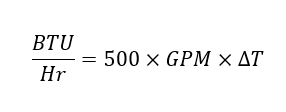An approach to reducing energy & Water consumption
Quantification
Making sense of building data
Basics
Building Blocks













Heat
Sensible Heat (Air)


Total Heat (Air)


Total Heat (Water)


Power
Simple



Single Phase




3 Phase




Motors
Equation


Quick Calculation
ENERGY
kWh ⇓
% ⇓
COST
$ ⇓
% ⇓
CO2
Metric Tons ⇓
% ⇓
PAYBACK
years
Boilers
Equation


Quick Calculation
Coming soon.
Chillers
Equation



Water
Leak Waste Equation


Leak Waste Calculation
People
AHU
Coil Leak-by
Equation



Diagram

Quick Calc
ENERGY
kWh ⇓
COST
$ ⇓
CO2
Metric Tons ⇓
Mixed Air
Equation


Diagram
Coming soon…
Quick Calc
Coming soon…
Whole Building
Comprehensive Energy Consumption & Savings
Calculating the energy consumption of a building’s Heating, Ventilation, and Air Cooling (HVAC) systems more precisely requires the use of climate data. Energy consumption of an HVAC system is largely dependent on outside air temperature (OAT). In the industry, temperature bin simulations are used, based on the buildings climate zone, to better predict energy consumption before and after an energy saving measure. David Sellers explains, in great detail, how to get Bin Weather Data for the United States and International Locations in his blog post. The PG&E’s HVAC calculator, featured below, is a great example of a bin simulation is used to quantify energy savings.
Equation


Diagram


